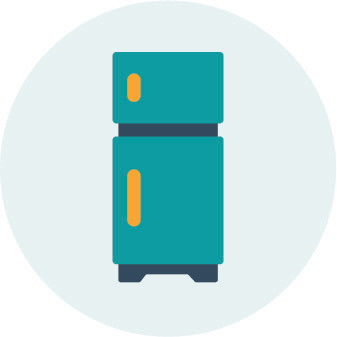Even when it’s blistering hot outside, sometimes you can crave a good hot meal — even when you finally get tired of grilling but loathe the idea of turning on the oven. There are some simple, practical things you can do to reduce the energy load and keep comfortable in your kitchen so you don’t have to seek refuge in the nearest air-conditioned restaurant.
OVEN

Limit pre-heating.
Pre-heating the oven is necessary for cooking many dishes. Most ovens have a display that counts down the pre-heating time and lets you know when it is ready to use. If your oven doesn’t have this display, use an oven thermometer to see when it’s ready for cooking.
Keep the oven door closed.
Every time you open the oven door, the oven temperature can drop 25 degrees. Avoid wasting energy by using the oven light or a timer. Use a digital timer, which is more precise than a wind-up model.
Use a meat thermometer.
Invest in a meat thermometer for roasting meat. These are ovenproof and usually include a digital meter that tells you what temperature your meat should be when it’s done. This will also reduce the need to open the oven door while cooking.
Clean the door seal.
Use a kitchen degreaser and gently clean the seal on your oven door to retain the maximum heat.

REFRIGERATOR
Cover your food.
Your refrigerator’s compressor works harder to cool moist air, and covered foods limit moisture evaporation. Of course, your refrigerator will smell better, too.
Clean the coils.
Make it an annual thing: clean or dust the coils on the back of your refrigerator. This helps the compressor cool faster and run less frequently, reducing energy use and extending the unit’s life.

OTHER APPLIANCES
Consider small appliances.
Beyond microwaves, don’t forget about toaster and convection ovens, air fryers, slow cookers, pressure cookers, and other small cooking appliances. These handy appliances use less energy and generate less heat than a standard oven.
ENERGY-EFFICIENT LIGHTING

Change out old light bulbs.
Replace your incandescent bulbs, recessed downlights, and undercabinet lighting with LED lighting in your kitchen (not to mention the rest of your home). These energy-efficient lights use far less energy and generate less heat. Incandescent bulbs release 90% of their energy as heat, while LEDs release almost no heat.



